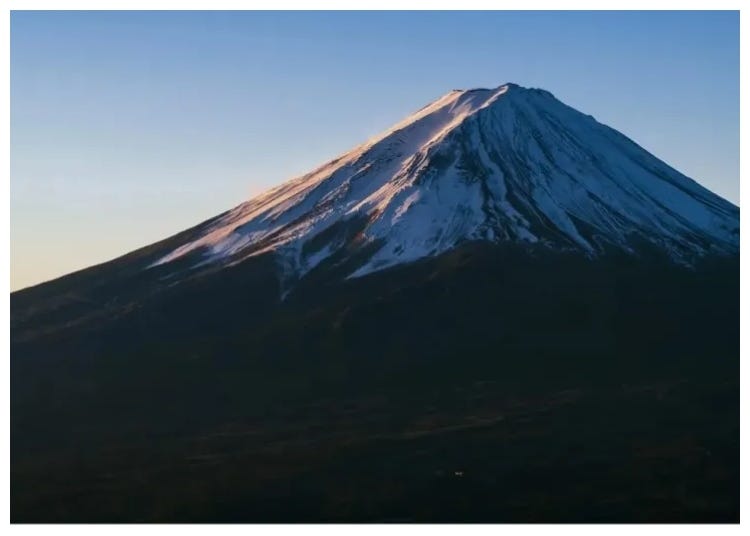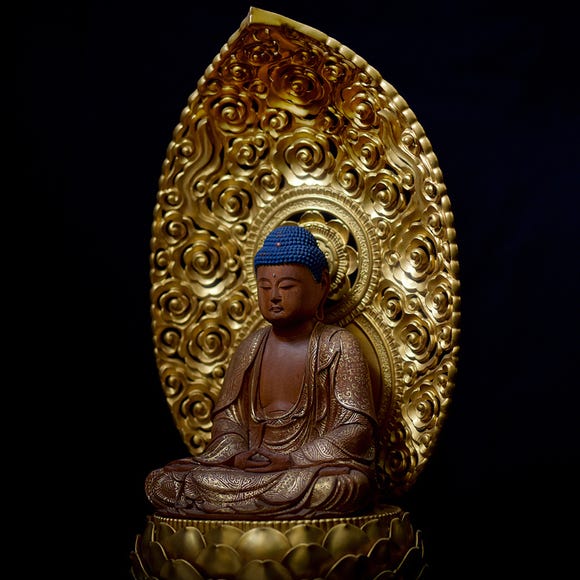
“They are taking Mt. Fuji too lightly.”
Being located at the foot of Mt. Fuji is a source of pride for the Shizuoka Prefecture town of Fujinomiya and its residents. That proximity to Japan’s tallest and most famous mountain, though, has also become a problem for the city.
Mt. Fuji’s has an official climbing season, which runs from mid-summer to early fall. However, it’s not like there’s a fence running around the whole mountain, so even as Shizuoka and Yamanashi (the two prefectures Mt. Fuji straddles the border of) tell people to refrain from hiking its upper trails during the off season, every year a number of people ignore the warnings, and a number of them need to be rescued.
When those rescues take place on or near Mt. Fuji’s Fujinomya Trail, it’s the Fujinomiya Municipal Fire Department that has to go get the overconfident off-season climbers and bring them back down to safety. Fujinomiya mayor Hidetada Sudo is fed up with the situation, and during his regularly scheduled press conference on May 9, he called for new regulations that would force off-season hikers to pay the bill for rescue operations needed to bail them out of trouble, saying “They are taking Mt. Fuji too lightly.”
▼ Video of the frustrated Sudo
“They are not listening to the warnings and selfishly choosing to climb [during the off season],” Sudo lamented. “The cost of rescue operations is tremendous, so shouldn’t the burden of paying those costs be carried by the people requiring [off-season] rescues? They have a responsibility for the results of their actions.”
During his statements, Sudo specifically referenced the Chinese-national college student who had to be rescued from the side of Mt. Fuji two separate times over the course of five days last month,having made a second off-season climb attempt to look for his smartphone, which he’d lost during his first unauthorized hike.
Sudo made a point of acknowledging that even the lives of off-season hikers are precious, and that rescuing them is a must, regardless of them willfully not heeding safety warnings. However, he feels that off-season hikers are giving insufficient consideration to not only the costs of operations, but the risks they pose to rescue team members’ lives as well, saying “Because there is no rule [requiring off-season hikers to pay for rescue costs], they have a carefree attitude about climbing [in the off season] and asking to be rescued” and that rescued off-season hikers have described their motivations with such shallow justifications as “The mountain is there, so I wanted to climb it” and “I liked the idea of the adventure.”
Currently, rescue operation expenses, including those for off-season rescues, are paid for through government funds. Though there is a precedent of Saitama Prefecture having a regulation that requires unauthorized hikers to pay fuel expenses for helicopter rescue missions, following Sudo’s comments Shizuoka Prefecture governor Yasutomo Suzuki said that he would like the federal government to be involved in setting the policy, and plans to discuss the matter with relevant officials.
With the weather getting warmer, though, the temptation is likely growing for those drawn to the idea of climbing Mt. Fuji before the official season begins. It’s worth saying once again that, despite the invitingly gentle slope Mt. Fuji seems to have when viewed from afar, it’s a serious mountain where unpredictable severe weather, altitude sickness, and other factors can create life-threatening conditions of the sort you don’t want to get caught in during the off-season, when ranger stations and other facilities on the mountain are largely unstaffed. So if you are looking to climb to Japan’s tallest peak, do it the smart way: during the climbing season.
Source: FNN Prime Online, TV Asahi
Top image: Pakutaso
*Prices and options mentioned are subject to change.
*Unless stated otherwise, all prices include tax.
Recommended places for you
-
Goods

Yoshida Gennojo-Roho Kyoto Buddhist Altars
Gift Shops
Nijo Castle, Kyoto Imperial Palace
-
Appealing

Rukku and Uohei
Izakaya
Sapporo / Chitose
-

Jukuseiniku-to Namamottsuarera Nikubaru Italian Nikutaria Sannomiya
Izakaya
Kobe, Sannomiya, Kitano
-

ISHIDAYA Hanare
Yakiniku
Kobe, Sannomiya, Kitano
-

Kanzenkoshitsuyakinikutabehodai Gyugyu Paradise Sannomiya
Yakiniku
Kobe, Sannomiya, Kitano
-

Kambei Sannomiyahonten
Yakiniku
Kobe, Sannomiya, Kitano
-

Hello Kitty theme park to be overrun by zombies this summer, young children barred from entering
-

Ramen vending machine brings a new noodle stand experience to Tokyo station
-

B:Conte Asakusa: A Kitchen-Equipped Hotel Perfect for Tokyo Sightseeing, Family Trips, and Long Stays
by: Mayumi Kawai
-

Can Art Explain Godzilla? Tokyo's New Exhibit Takes a Shot
-
Ad

Tokyo Comedy Bar: Where Jokes and Craft Beer Flow Freely
-

Japanese restaurant chain installs tip boxes in response to foreign tourists leaving tips, sparks debate
-

6 Most Scenic Spots Around Mount Yotei, Hokkaido: Gorgeous Sunflowers & More!
-

3 Best Izakaya In Osaka Where You Can Enjoy Drinks and Local Dishes, Recommended by Locals
-

Kamaishi Japan: Kamaishi Unosumai Recovery Stadium and Sightseeing Spots in Japan’s Rugby Town
-

Mr. Sato visits the Retro Space Saka Hall, full of syringes, Mediocrity, and bittersweet memories
-

Under The Tracks: Introducing 5 of Tokyo's Hot New Trendy Spots!
-

Kyoto Surprises Us With Its Luxury Domestic Beef Sukiyaki Lunch (For Under $10!)
- #best sushi japan
- #what to do in odaiba
- #what to bring to japan
- #new years in tokyo
- #best ramen japan
- #what to buy in ameyoko
- #japanese nail trends
- #things to do japan
- #onsen tattoo friendly tokyo
- #daiso
- #best coffee japan
- #best japanese soft drinks
- #best yakiniku japan
- #japanese fashion culture
- #japanese convenience store snacks














